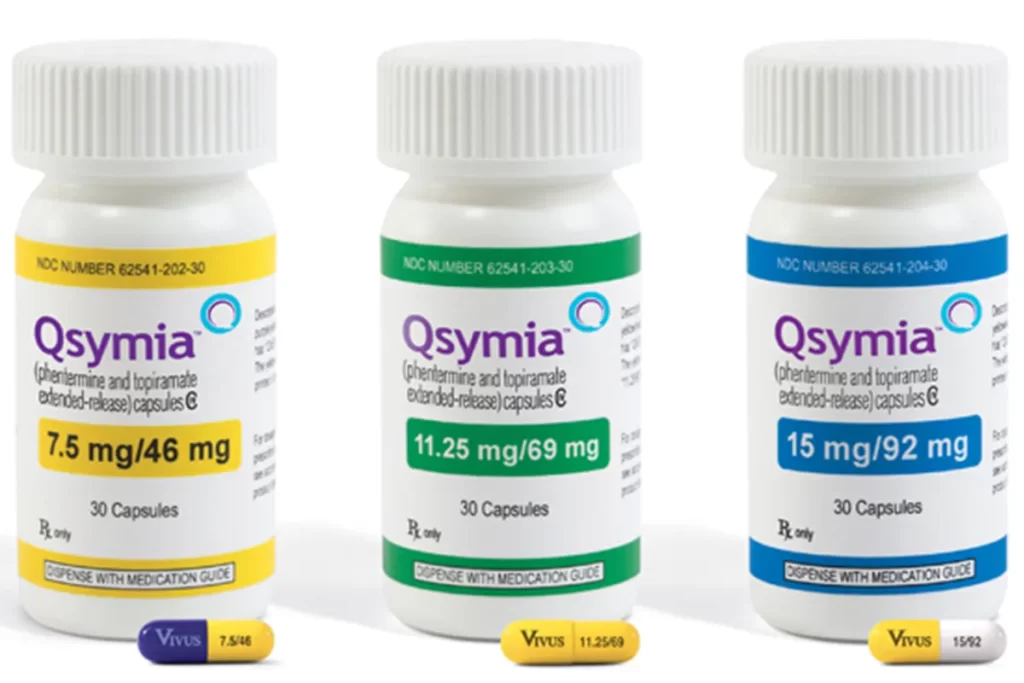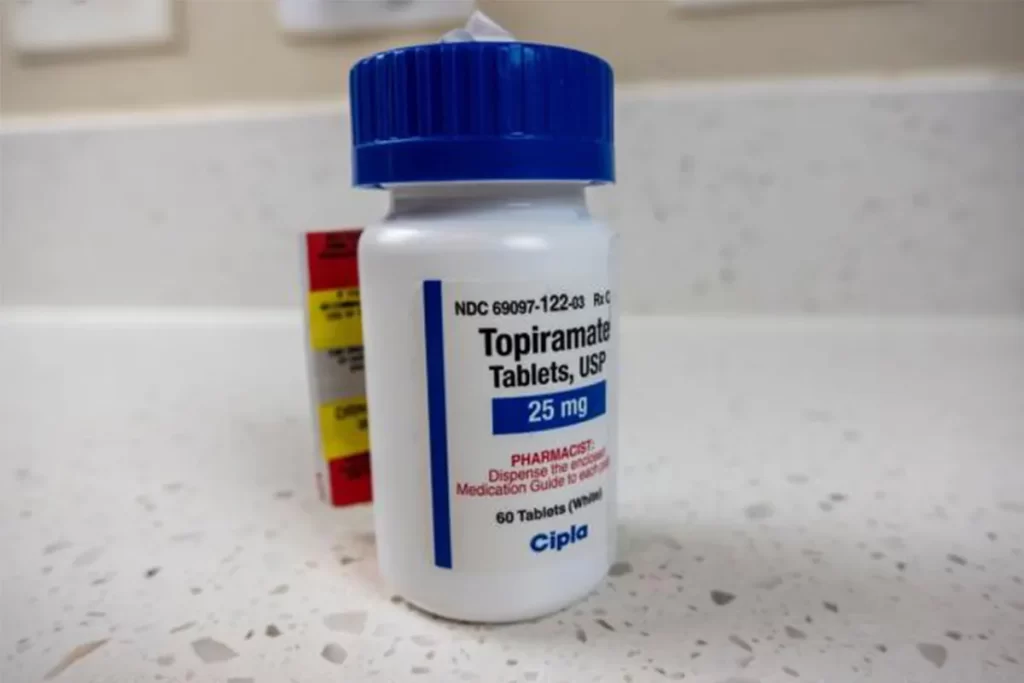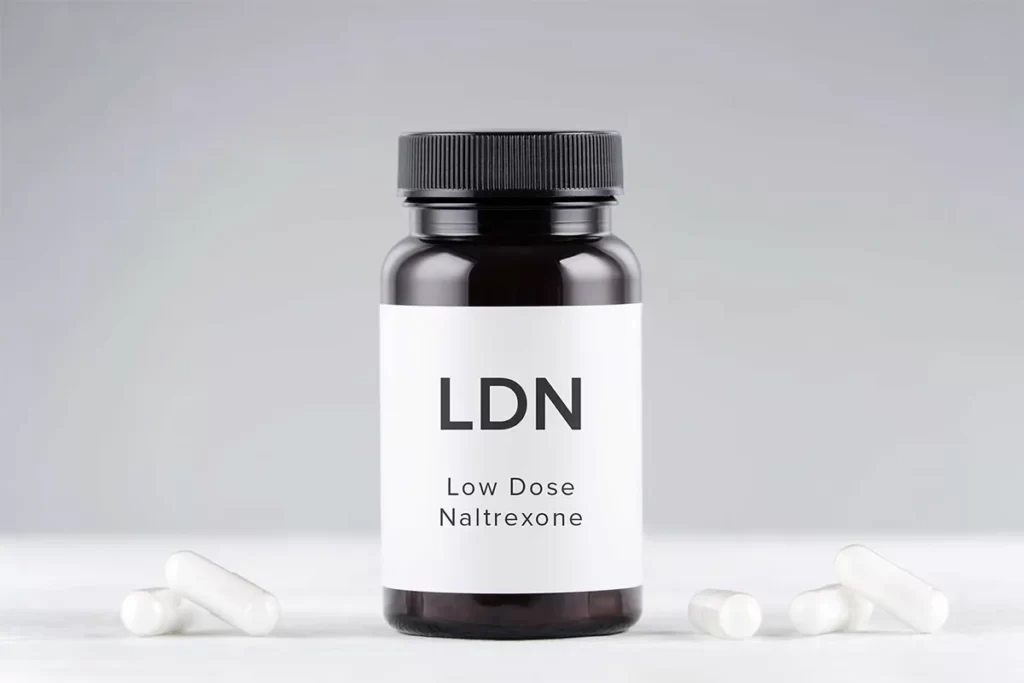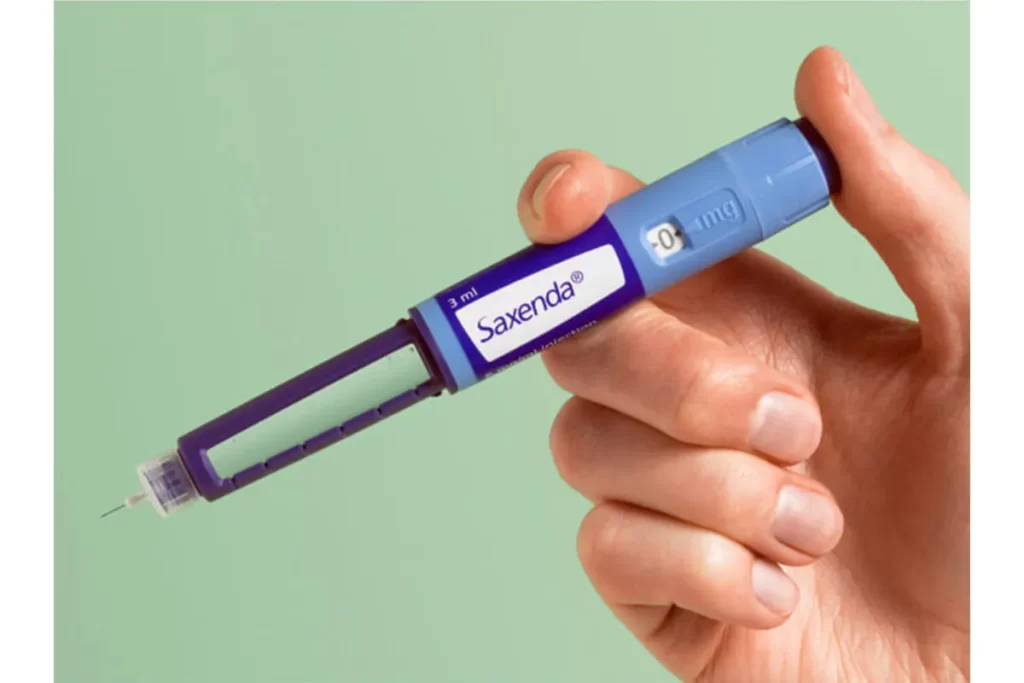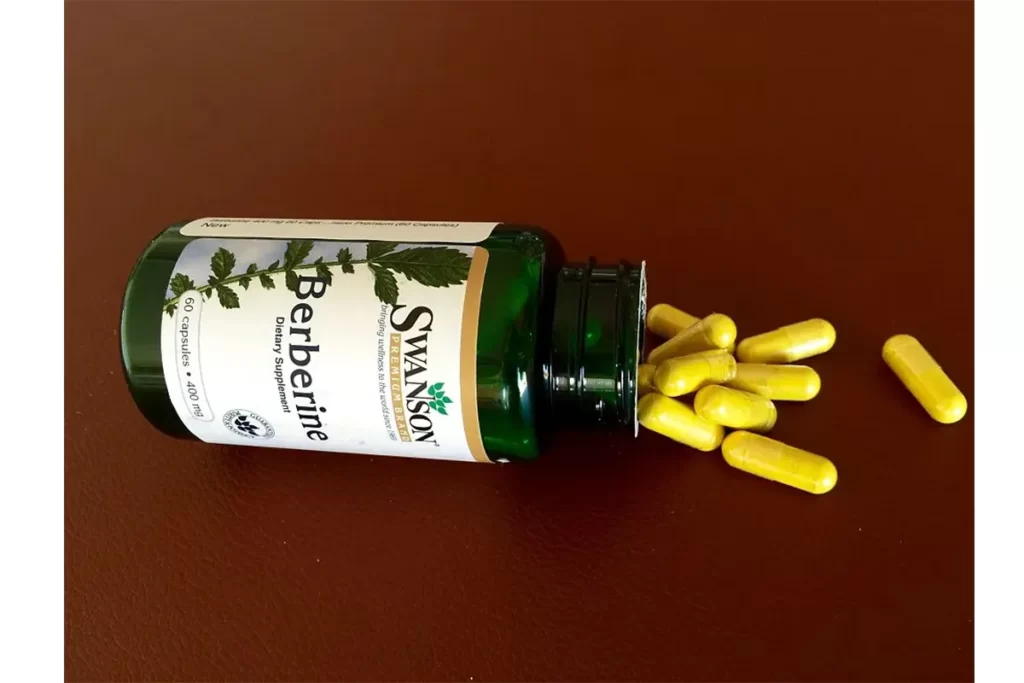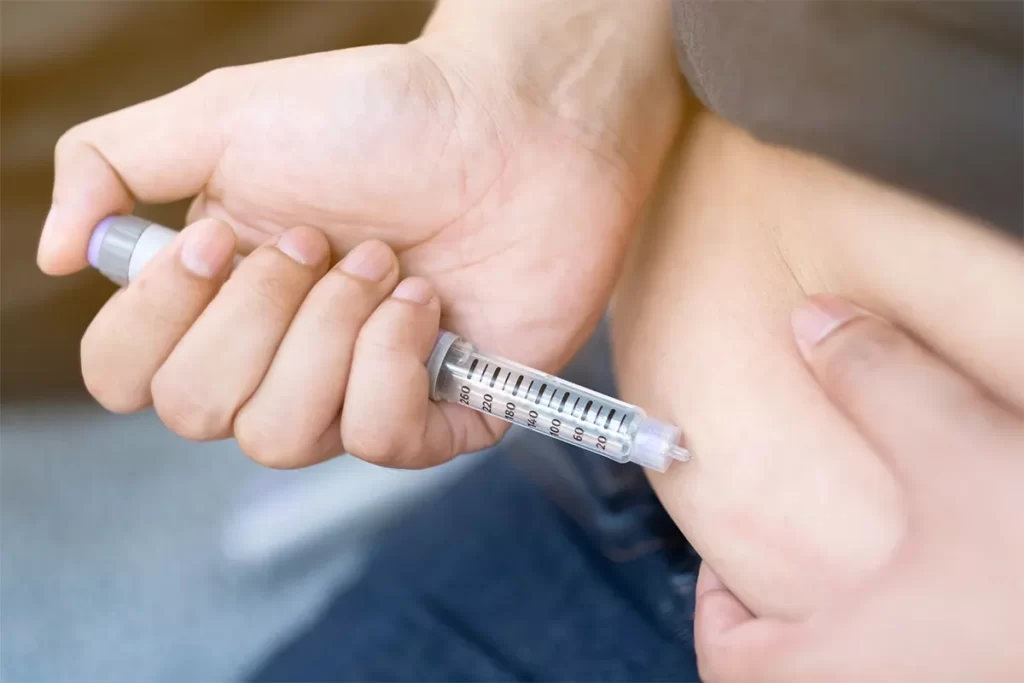Ozempic Vs Trulicity: Analysis for Diabetic Care and Weight Loss
-
 Written by
Michael J. Ormsbee
Written by
Michael J. Ormsbee
- LAST UPDATED October 17, 2023
The rise in the global prevalence of Type 2 diabetes has led to an urgent demand for effective treatments that can curb its impact. As this condition continues to affect millions, the medical community has ventured into exploring various therapeutic avenues. Among these, GLP1 receptor agonists have emerged as a promising solution. Specifically, when discussing this category, the battle of Ozempic Vs Trulicity often takes center stage. Both these drugs have gained attention as key contenders in the fight against diabetes, offering patients new hopes and avenues for managing their condition. Their effectiveness and varying attributes make them notable choices for those seeking optimal treatments.
Understanding Ozempic Vs Trulicity
In the realm of Type 2 diabetes management, the mention of Ozempic Vs Trulicity has become increasingly common. Both are members of the GLP1 receptor agonist family, yet they differ in specific ways that are crucial for potential users to understand. Diving deep into the intricacies of these drugs can provide clarity on their functions and how they cater to the diverse needs of patients.
Ozempic
What is Ozempic?
Ozempic, known generically as semaglutide, is a prescription medication used to enhance the control of blood sugar levels in adults with Type 2 diabetes. It is not intended for the treatment of Type 1 diabetes or diabetic ketoacidosis.
Its main ingredients
The primary active ingredient in Ozempic is semaglutide. Semaglutide is a glucagonlike peptide1 (GLP1) receptor agonist, which means it mimics the action of GLP1, a hormone in the body. It’s this mimicking action that gives Ozempic its potency against elevated blood sugar levels.
How it works in treating Type 2 diabetes
Once administered, Ozempic works in several ways. Firstly, it stimulates the pancreas to produce more insulin when blood sugar levels are high. Insulin is the hormone responsible for transporting sugar from the bloodstream into cells where it’s used for energy. Secondly, Ozempic reduces the amount of sugar the liver produces and releases into the bloodstream. Additionally, it slows down the rate at which the stomach empties, which means sugar enters the bloodstream more slowly after eating.
When considering Ozempic Vs Trulicity, it’s crucial to recognize the unique attributes and functionalities Ozempic brings to the table, especially its potency in mimicking the body’s natural hormones to regulate blood sugar.
Trulicity
What is Trulicity?
Trulicity, or dulaglutide, is another powerful weapon in the fight against Type 2 diabetes. Similar to Ozempic, Trulicity is a GLP1 receptor agonist. It’s designed to assist adults with Type 2 diabetes in maintaining optimal blood sugar levels.
Its primary components
Dulaglutide, the active ingredient in Trulicity, is the primary warrior against unstable blood sugar levels in this medication. This component acts in ways very similar to the body’s native GLP1 but is designed to last longer in the system, ensuring prolonged action against elevated blood sugars.
Its mechanism of action
Trulicity’s mechanism closely mirrors that of Ozempic due to their shared classification as GLP1 receptor agonists. When introduced into the body, Trulicity prompts the pancreas to secrete insulin in response to increased blood sugar levels. Simultaneously, it signals the liver to reduce its glucose production. Additionally, much like Ozempic, Trulicity has the added benefit of slowing gastric emptying, leading to a gradual rise in blood sugar post meals.
In the overarching conversation of Ozempic Vs Trulicity, one cannot underscore enough the importance of understanding the nuanced differences and similarities between the two. While both medicines operate under the umbrella of GLP1 receptor agonists, their unique compositions and specific attributes mean they may cater to individual needs differently.
In essence, the choice between Ozempic Vs Trulicity is not a simple onesizefitsall. It requires a thorough understanding, often facilitated by healthcare professionals, to determine which medication aligns best with a patient’s specific conditions, lifestyle, and requirements. Whether one opts for Ozempic or Trulicity, the ultimate goal remains consistent: achieving and maintaining optimal blood sugar levels to ensure a healthier life.

Comparing Weight Loss Efficacy of Ozempic Vs Trulicity
Type 2 diabetes often intertwines with obesity, amplifying the need for effective treatments that tackle both issues. The conversation about Ozempic Vs Trulicity isn’t limited to just blood sugar regulation; it extends to their potential benefits in weight loss. To truly comprehend the weight loss efficacy between these two drugs, we’ll delve into both scientific studies and realworld testimonials.
Ozempic Vs Trulicity for Weight Loss: What the Studies Say
Clinical studies form the backbone of our understanding regarding the weight loss capabilities of Ozempic Vs Trulicity. Both of these GLP1 receptor agonists demonstrate potential beyond blood sugar control, offering hope for those looking to shed extra pounds in addition to managing their diabetes.
Ozempic and Weight Loss
Clinical trials have indicated that Ozempic could lead to significant weight loss. In several studies, participants taking Ozempic experienced a reduction in body weight, with some losing up to 5% or more of their initial body weight. This weight reduction was attributed to Ozempic’s ability to slow gastric emptying, which promotes feelings of fullness and can lead to reduced calorie intake. Furthermore, Ozempic may increase energy expenditure, contributing to the overall weight loss effect.
Trulicity and Weight Loss
Trulicity, too, has been a beacon of hope in clinical studies. Participants on this medication also reported weight loss. Trulicity’s action in slowing down the digestive process plays a role in promoting satiety, which can decrease the urge to eat excessively. Additionally, like Ozempic, Trulicity might enhance energy expenditure, further propelling its weight loss potential.
While the specific weight loss amounts vary based on individual factors and the study in question, it’s evident that both Ozempic and Trulicity have beneficial effects on weight when taken as prescribed. Nonetheless, when juxtaposing Ozempic Vs Trulicity, differences in weight loss efficacy emerge, although the general consensus is that both drugs can be effective tools in a comprehensive weight management strategy.
RealWorld Trulicity for Weight Loss Reviews
Moving beyond the confines of controlled clinical trials, realworld reviews offer a different lens into the weight loss journey of Ozempic Vs Trulicity users. Anecdotal evidence, though less structured, can sometimes paint a vivid picture of the everyday challenges and successes patients face.
Personal Experiences with Ozempic
Many users report a decrease in appetite shortly after beginning their regimen with Ozempic. This reduced appetite often leads to lower calorie consumption, which, coupled with the drug’s intrinsic properties, can result in weight loss. While many patients have reported positive outcomes, some have also described side effects like nausea, which could influence their eating habits and overall weight loss experience.
Trulicity Users Weigh In
Realworld Trulicity for weight loss reviews showcases a similar pattern. Numerous patients detail decreased hunger, leading to weight loss. Others highlight the convenience of the onceweekly injection, suggesting it’s easier to maintain as a routine. However, as with Ozempic, some users have reported side effects, with gastrointestinal issues being a frequent mention.
Realworld reviews of Ozempic Vs Trulicity underscore the individuality of the weight loss journey. While clinical studies provide averages and general trends, personal testimonials highlight the spectrum of experiences, from rapid and significant weight loss to more gradual reductions and even occasional weight stability.
Navigating the complex terrain of Ozempic Vs Trulicity in the context of weight loss involves synthesizing information from both rigorous clinical trials and the personal testimonies of those on the front lines of their health battles. Both Ozempic and Trulicity demonstrate potential as powerful allies in the fight against excess weight. However, their effectiveness can vary based on individual factors such as metabolism, lifestyle, diet, and adherence to the prescribed regimen.
While Ozempic and Trulicity offer promise, it’s paramount to remember that these drugs are not standalone solutions. They are most effective when integrated into a holistic approach to health that includes a balanced diet, regular exercise, and frequent consultations with healthcare professionals. The ongoing debate of Ozempic Vs Trulicity in the realm of weight loss is testament to the evolving nature of diabetes care, as researchers and patients alike seek optimal solutions for comprehensive health and wellbeing.
Dosage, Administration, and Switching Between Ozempic Vs Trulicity
The treatment landscape of Type 2 diabetes has evolved with the introduction of GLP1 receptor agonists, and among them, the conversation around Ozempic Vs Trulicity has been prominent. Beyond their efficacy in glycemic control and potential weight loss benefits, understanding their dosage, administration, and the dynamics of switching between the two is crucial for optimal patient care.
Recommended Dosages for Both Drugs
Ozempic Dosage
Semaglutide, commercially known as Ozempic, is typically initiated at a low dose to minimize potential side effects, primarily gastrointestinal issues. The starting dose is generally 0.25 mg once weekly for the initial four weeks. This period acts as the doseescalation phase, and subsequently, the dosage can be increased to 0.5 mg once weekly. For patients who require further glycemic control, the dose can be increased to a maximum of 1 mg once weekly, after considering individual tolerance and efficacy.
Trulicity Dosage
Dulaglutide, marketed under the name Trulicity, also has a stepwise dosing approach. The recommended starting dose is 0.75 mg once weekly, which can be administered without regard to meals. For those requiring better blood sugar control, the dose can be escalated to 1.5 mg once weekly. Similar to Ozempic, individual patient needs and tolerability are crucial in determining the appropriate dosage.
When considering Ozempic Vs Trulicity in terms of dosage, it’s pivotal to note that while both are onceweekly injections, their starting and maintenance doses differ. It’s also imperative to remember that the most effective dose is not solely about the highest available but what achieves therapeutic goals with the least side effects.
How Are They Administered?
Ozempic Administration
Ozempic is available as a clear, colorless solution in a prefilled pen. The injection is subcutaneous, meaning it is given just under the skin, typically in the abdomen, thigh, or upper arm. Proper training in injection technique is essential, and sites should be rotated with each injection to minimize the risk of lipodystrophy.
Trulicity Administration
Like Ozempic, Trulicity is administered subcutaneously using a prefilled pen. However, Trulicity’s pen design boasts a unique “onceweekly, readytouse” feature, eliminating the need for mixing or measuring. It’s designed for ease of use, especially for patients who might be apprehensive about selfinjections.
In the debate of Ozempic Vs Trulicity from an administration perspective, the tools provided by the manufacturers, especially the pen designs, are pivotal. Both are crafted to simplify the injection process, though there might be personal preferences based on ease of use or other individual factors.
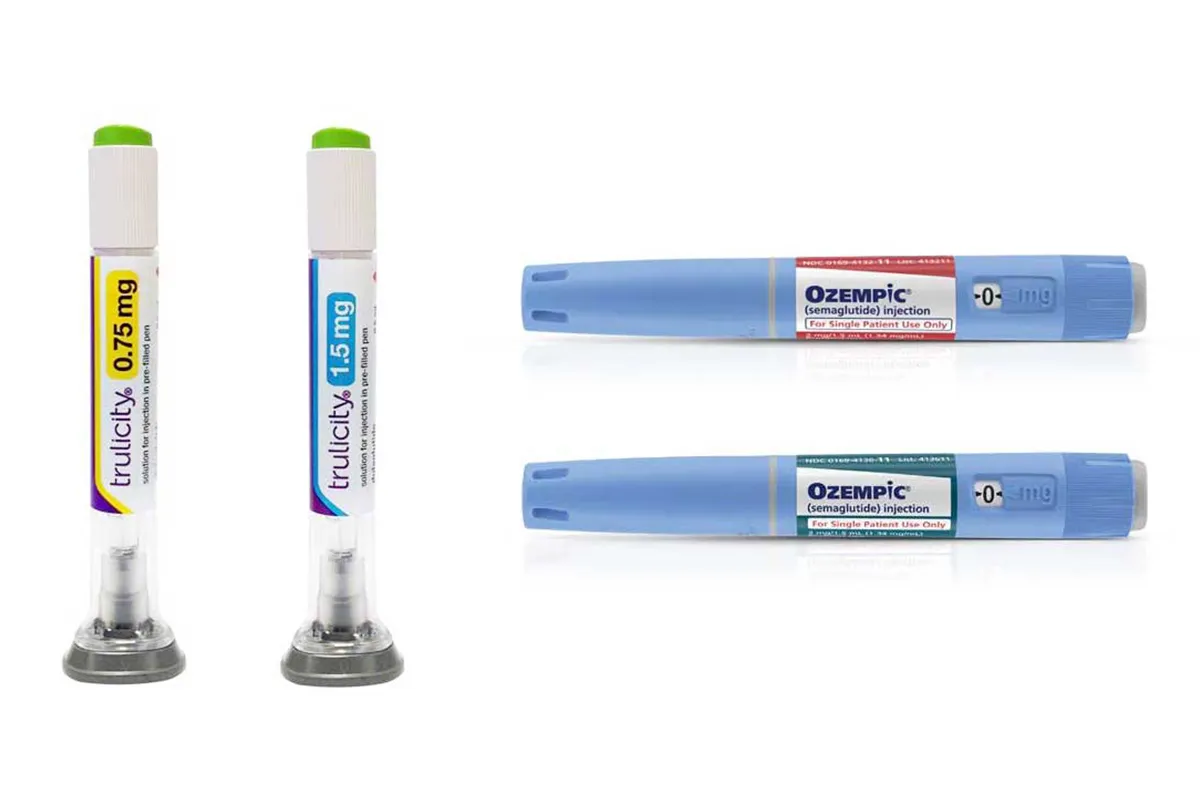
Insights on Switching from Trulicity to Ozempic and ViceVersa
Switching between GLP1 receptor agonists might be a consideration based on individual patient needs, efficacy, side effect profiles, or insurance coverage. When contemplating a switch in the Ozempic Vs Trulicity discussion, there are several nuances to keep in mind:
Switching from Trulicity to Ozempic
For patients transitioning from Trulicity to Ozempic, it’s crucial to start with Ozempic’s recommended initial dose, regardless of the Trulicity dosage they were on. This ensures that patients can acclimate to the new medication and minimizes potential side effects.
Switching from Ozempic to Trulicity
Conversely, when shifting from Ozempic to Trulicity, the recommended starting dose of Trulicity should be followed. As with any medication switch, continuous monitoring is essential to gauge efficacy and safety.
It’s also noteworthy that while Ozempic Vs Trulicity presents a comparison of two specific GLP1 receptor agonists, they are part of a broader class of drugs. If neither provides the desired therapeutic effect, there are other GLP1 receptor agonists available that might be more suitable.
The detailed examination of Ozempic Vs Trulicity in the realm of dosage, administration, and the intricacies of switching provides a comprehensive perspective for healthcare professionals and patients. Making informed decisions about these medications necessitates a holistic understanding of their pharmacological profiles, coupled with an individualized approach to patient care. As the diabetes therapeutic landscape evolves, staying informed about drugs like Ozempic and Trulicity becomes imperative in offering the best care to those navigating the challenges of Type 2 diabetes.
Comparison of Ozempic Vs Trulicity with Other Drugs
The management of Type 2 diabetes has witnessed a paradigm shift with the emergence of various classes of drugs, each offering unique mechanisms of action and benefits. Among these, GLP1 receptor agonists, like Ozempic and Trulicity, have shown promising results. However, when weighing Ozempic Vs Trulicity, it’s beneficial to draw comparisons with other commonly prescribed drugs. This sheds light on the broader context of diabetes management and allows patients and healthcare providers to make informed decisions.
Ozempic vs. Trulicity vs. Victoza
Victoza (liraglutide) is another wellestablished GLP1 receptor agonist that has carved its niche in the treatment of Type 2 diabetes.
Mechanism of Action
Both Ozempic (semaglutide) and Trulicity (dulaglutide) work by mimicking the action of GLP1, a hormone that increases insulin release while suppressing glucagon, subsequently lowering blood sugar levels. Victoza also operates on the same principle, given its classification.
Efficacy and Safety
While Ozempic Vs Trulicity is a frequent comparison, introducing Victoza to the mix provides a broader picture. Clinical trials have shown that all three drugs provide substantial reductions in HbA1c levels. However, there might be slight variations in their efficacy based on individual patient factors.
Weight Loss Benefits
GLP1 receptor agonists are also known for their weight loss advantages. While both Ozempic and Victoza have shown considerable weight loss benefits in clinical trials, Trulicity’s impact on weight is slightly more modest.
Side Effects
The side effect profile for these drugs is similar, given their common mechanism. Gastrointestinal issues, including nausea and vomiting, are most commonly reported.
Ozempic vs. Trulicity vs. Jardiance
Jardiance (empagliflozin) belongs to a different class of diabetes medications known as SGLT2 inhibitors.
Mechanism of Action
Unlike the GLP1 mechanism found in Ozempic Vs Trulicity, Jardiance works by inhibiting the sodiumglucose cotransporter 2 (SGLT2) in the kidneys. This action increases glucose excretion in the urine, subsequently lowering blood sugar levels.
Efficacy and Safety
When juxtaposing Ozempic Vs Trulicity with Jardiance, it’s clear that while all three drugs are effective, their benefits and risks stem from different mechanisms. Jardiance, besides glycemic control, has shown cardiovascular benefits in specific populations.
Weight Loss Benefits
Jardiance offers modest weight loss benefits, primarily through increased glucose excretion.
Side Effects
Unique to SGLT2 inhibitors, Jardiance might increase the risk of genital yeast infections and urinary tract infections. It’s also associated with a rare but serious risk of diabetic ketoacidosis.
Ozempic vs. Trulicity vs. Mounjaro
(Note: As of my last training cutoff in January 2022, there’s no drug named “Mounjaro” recognized for diabetes treatment. I’ll provide a general comparison approach.)
Mechanism of Action
The comparison of Ozempic Vs Trulicity with Mounjaro would require understanding Mounjaro’s mechanism of action. It’s crucial to determine if it operates similarly to GLP1 receptor agonists or brings a novel approach to the table.
Efficacy and Safety
A headtohead clinical trial or metaanalysis would be the gold standard to ascertain the comparative efficacy and safety of these drugs.
Weight Loss Benefits
Given the weight loss potential seen with Ozempic and Trulicity, it would be essential to assess if Mounjaro offers similar, superior, or inferior benefits.
Side Effects
A thorough examination of side effect profiles will inform potential risks associated with Mounjaro compared to the established profiles of Ozempic and Trulicity.
When considering Ozempic Vs Trulicity in the broader landscape of Type 2 diabetes treatment, understanding their comparison with other drugs like Victoza, Jardiance, and potentially Mounjaro offers a comprehensive view. This enables clinicians and patients to make decisions anchored in a holistic understanding of available therapeutic options. As the field continues to evolve, continuous research and updates are essential in tailoring the best treatment plans for individual patient needs.
Side Effects and Safety Profile: Ozempic Vs Trulicity
The management of Type 2 diabetes demands a fine balance between efficacy and safety. When introducing any new therapeutic agent into a regimen, understanding its potential side effects and safety profile is paramount. In the realm of GLP1 receptor agonists, two drugs that often find themselves in the limelight are Ozempic and Trulicity. As the comparison of Ozempic Vs Trulicity is frequently sought, it is essential to delve deeper into their side effect profiles to guide better clinical and patient decisions.
Common and Mild Side Effects of Both Drugs
GLP1 receptor agonists share some common side effects due to their similar mechanism of action. Let’s start by analyzing the common and milder side effects witnessed in patients administered with either Ozempic or Trulicity.
Gastrointestinal Disturbances: One of the most commonly reported side effects for both drugs is gastrointestinal issues. Patients might experience nausea, vomiting, diarrhea, and abdominal pain. This is especially common when starting the medication, but for many, these symptoms tend to subside with continued use.
Loss of Appetite: Some patients on Ozempic Vs Trulicity might experience a reduced appetite, which can also contribute to the weight loss seen with these drugs.
Injection Site Reactions: As both medications are administered subcutaneously, there can be reactions at the injection site. These may include redness, itching, and swelling. Rotating the injection site can often alleviate these symptoms.
Serious Side Effects to be Aware Of
While the mild side effects are more common, there are serious side effects associated with both drugs that need to be monitored and addressed.
Pancreatitis: Both drugs have a rare but noted association with acute pancreatitis. Patients should be advised to report severe and persistent abdominal pain. If pancreatitis is suspected, the drug should be discontinued.
Thyroid Tumors: There is a concern, especially with longterm use, that GLP1 receptor agonists might be associated with a type of thyroid tumor in rodents. However, it’s yet unclear if this risk translates to humans.
Kidney Issues: Ozempic, in particular, may affect kidney function, leading to reduced urine output, swelling in the feet, and fatigue. It’s essential to monitor kidney function and adjust the dose as necessary.
Severe Hypoglycemia: While it’s less common due to their mechanism of action, when used in combination with other diabetes medications like sulfonylureas or insulin, there might be a risk of severe low blood sugar.
Trulicity vs. Ozempic Side Effects: Which has Fewer or More Tolerable Effects?
Directly comparing Ozempic Vs Trulicity in terms of side effects brings forth a nuanced perspective. Both drugs have their pros and cons, and individual patient experiences may vary.
Frequency and Severity: In clinical trials, the side effect profile between Ozempic and Trulicity has been quite comparable. However, some patients might find one drug more tolerable than the other based on individual factors.
Gastrointestinal Tolerance: Some studies suggest that Ozempic might have a slightly higher incidence of gastrointestinal side effects compared to Trulicity. However, for most patients, these symptoms tend to be transient and manageable.
Duration and Onset: The onset and duration of side effects can vary. Some patients might experience side effects immediately upon starting the medication, while for others, it might develop over time. Periodic assessment and open communication between the patient and healthcare provider can guide decisions on continuing the therapy or seeking alternatives.
The comparison of Ozempic Vs Trulicity in the context of side effects and safety profiles requires a comprehensive understanding. While both drugs have shown significant promise in managing Type 2 diabetes, it’s vital to weigh their benefits against potential risks. Regular monitoring, patient education, and ongoing communication between the patient and healthcare team are pivotal in ensuring the best outcomes. Individualization of therapy, considering both efficacy and safety, remains the cornerstone of diabetes management.
Cost Implications: Ozempic Vs Trulicity
When managing chronic conditions like Type 2 diabetes, patients and healthcare professionals often have to consider various aspects of available treatments, including efficacy, side effects, and of course, cost. In recent times, the financial conversation surrounding diabetes care has grown more significant, given the rising prices of many medications. The debate over Ozempic Vs Trulicity is no exception. These GLP-1 receptor agonists, while offering promising results, come with their own cost implications. Here, we delve deeper into the financial considerations associated with these drugs.
Ozempic vs. Trulicity Cost: Which is More Cost-Effective?
The direct cost comparison of Ozempic Vs Trulicity can be a bit complex, as several factors play into the final price a patient might pay.
List Price: The list prices for both drugs can be quite high, making them seem inaccessible to many without insurance or assistance. However, these prices do not often represent what patients end up paying out of pocket. Factors like rebates, discounts, and insurance negotiations can greatly impact the final cost.
Dosage and Frequency: When comparing Ozempic Vs Trulicity based on cost, one should also consider the dosing frequency. Ozempic is usually administered once a week, as is Trulicity. However, the dosage strength and the number of doses required over time can impact cost.
Efficacy and Side Effects: The notion of cost-effectiveness doesn’t solely lie in the price tag. If one drug results in better glycemic control or fewer side effects leading to fewer doctor visits or adjunct treatments, its higher price might be justified.
Long-Term Benefits: Some studies have shown that both Ozempic and Trulicity might offer benefits beyond glycemic control, such as weight loss and cardiovascular benefits. The potential to reduce future medical expenses related to diabetes complications can also be a factor in cost-effectiveness.
Availability of Insurance Coverage or Assistance Programs for Both
Most patients in many countries rely on health insurance to subsidize the cost of their medications, and this holds true for Ozempic Vs Trulicity as well.
Insurance Coverage: Many insurance plans, including Medicare and Medicaid, have provisions for covering GLP-1 receptor agonists. However, the degree of coverage can vary. Some plans might have one drug on a preferred tier, leading to lower co-pays, while the other might be on a non-preferred tier. It’s essential for patients to check with their insurance providers to understand which drug is more financially viable for them.
Manufacturer Assistance: Recognizing the high costs of diabetes medications, many pharmaceutical companies, including those manufacturing Ozempic and Trulicity, offer assistance programs. These programs can provide significant discounts or even free medications for eligible patients. It’s crucial for patients and healthcare providers to explore these options, especially if cost is a barrier to adherence.
Generic and Biosimilar Options: As of the last update, there are no generic or biosimilar versions of either Ozempic or Trulicity available. However, the landscape of drug patents and approvals is always evolving. In the future, if generics or biosimilars enter the market, they might provide more cost-effective alternatives to the branded versions.
While the efficacy and safety profiles of drugs remain at the forefront of treatment decisions, the financial implications of Ozempic Vs Trulicity cannot be ignored. The direct and indirect costs associated with these medications can significantly impact patient adherence and overall diabetes management outcomes. It’s crucial for healthcare professionals and patients to maintain open communication about cost concerns and actively seek resources, be it through insurance, assistance programs, or alternative treatment options, to ensure that financial barriers do not impede optimal care.
Effectiveness in Treating Type 2 Diabetes: Ozempic Vs Trulicity
Managing type 2 diabetes is a long-term endeavor that requires consistent efforts to keep blood sugar levels in check. One of the prime metrics in assessing the management and treatment efficacy of diabetes is the hemoglobin A1C level, which gives a picture of a person’s average blood sugar levels over the past two to three months. In the contemporary pharmacological landscape, two drugs have emerged as key players in this regard: Ozempic and Trulicity. The comparison Ozempic Vs Trulicity in terms of their effectiveness in treating Type 2 diabetes has garnered significant attention. This analysis aims to delve deeper into their respective efficacies.
How Do Ozempic and Trulicity Compare in Terms of A1C Reduction?
When it comes to A1C reduction, both Ozempic and Trulicity have shown promising results in clinical trials. However, there are nuanced differences that deserve consideration:
Clinical Trials Data: In head-to-head clinical trials comparing Ozempic Vs Trulicity, both drugs demonstrated a significant reduction in A1C levels. Patients treated with Ozempic saw an average A1C reduction ranging from 1.0% to 1.5%, depending on the study and the dosage. On the other hand, Trulicity-treated patients observed an average A1C reduction ranging from 1.1% to 1.4%. While the ranges overlap, individual responses can vary widely.
Onset of Action: Another factor to consider is the onset of action. While both drugs work relatively quickly in reducing A1C levels, some studies suggest that Ozempic may show slightly faster initial results in some patients compared to Trulicity.
Duration of Efficacy: The effectiveness of Ozempic Vs Trulicity in A1C reduction over extended periods has been noted to be consistent. Both drugs maintain their efficacy, provided patients adhere to the prescribed regimen and continue with their overall diabetes management plan.
Cardiovascular Benefits Associated with Each Drug
The cardiovascular implications of type 2 diabetes are profound. Hence, any added cardiovascular benefit from antidiabetic medications is of immense value:
Ozempic and Cardiovascular Health: Ozempic has shown notable cardiovascular benefits. In the SUSTAIN-6 trial, Ozempic demonstrated a significant reduction in the risk of major adverse cardiovascular events (MACE), which include non-fatal heart attacks, non-fatal strokes, and cardiovascular deaths. The drug not only effectively managed A1C levels but also offered protective effects against some of the severe cardiovascular complications associated with diabetes.
Trulicity and Cardiovascular Well-being: Trulicity’s cardiovascular benefits were highlighted in the REWIND trial. This study found that Trulicity, in comparison to a placebo, reduced the risk of MACE by a notable margin. The results suggested that, beyond glycemic control, Trulicity could play a pivotal role in safeguarding the cardiovascular health of type 2 diabetes patients.
In the Ozempic Vs Trulicity debate, both drugs have demonstrated their prowess in the effective management of type 2 diabetes, particularly concerning A1C reduction. They both also carry the added advantage of potential cardiovascular benefits, further cementing their places as viable treatment options for patients. As always, the choice between them should be personalized, considering each patient’s unique medical history, potential side effects, cost implications, and lifestyle. It’s paramount that healthcare professionals and patients engage in thorough discussions to arrive at the most suitable treatment plan, ensuring optimal diabetes management and overall health outcomes.

FAQs about Ozempic Vs Trulicity
Why does Ozempic work better than Trulicity?
The question of whether Ozempic works better than Trulicity often arises from individual patient experiences or specific clinical trial results. Both medications are GLP-1 receptor agonists and help regulate blood sugar levels in type 2 diabetes patients. In some clinical studies, Ozempic has shown slightly higher average reductions in A1C levels than Trulicity. However, the efficacy can vary based on the individual, the dosage, and the duration of the treatment. It's essential to understand that "better" is subjective and depends on various factors, including side effects, cost, administration preferences, and individual patient needs.
Can you just switch from Trulicity to Ozempic?
Switching from Trulicity to Ozempic (or vice versa) is a decision that should be made in consultation with a healthcare professional. Both drugs have different dosing regimens, and there may be reasons specific to an individual's health profile or response to therapy that could influence the decision to switch. It's not a matter of merely replacing one with the other without a thorough medical evaluation.
Can Trulicity and Ozempic be used interchangeably?
While both Trulicity and Ozempic are GLP-1 receptor agonists and serve similar purposes in treating type 2 diabetes, they are not typically used interchangeably without a physician's guidance. Each drug has its own recommended dosing, administration schedule, and potential side effects. If considering a change, it's imperative to discuss with a healthcare provider to ensure the switch is beneficial and safe.
What is better than Ozempic for diabetes?
"Better" is a relative term when it comes to medications. While Ozempic has shown efficacy in treating type 2 diabetes, there are several other medications available, such as metformin, SGLT2 inhibitors, or insulin, among others. The most suitable medication depends on the individual's health profile, the severity of diabetes, the presence of any other health conditions, potential side effects, and personal preferences. It's always best to discuss with a healthcare provider to determine the optimal treatment plan.
Is Ozempic stronger than Trulicity?
The terms "stronger" or "weaker" can be misleading when comparing medications. Both Ozempic and Trulicity have demonstrated efficacy in reducing A1C levels in patients with type 2 diabetes. Some studies may show slight differences in average A1C reductions, but individual responses can vary. Rather than focusing on which is "stronger," it's crucial to consider which medication aligns best with an individual's therapeutic needs and goals.
What is the biggest side effect of Ozempic?
While Ozempic has been associated with several side effects, gastrointestinal issues, particularly nausea, are among the most commonly reported by patients. Some individuals might also experience vomiting, diarrhea, or abdominal pain. As with any medication, the side effects experienced can vary by individual. It's important to monitor any new or unusual symptoms and discuss them with a healthcare provider to ensure the drug is safe and effective for the patient.

